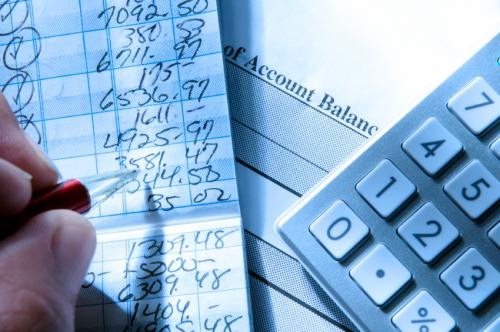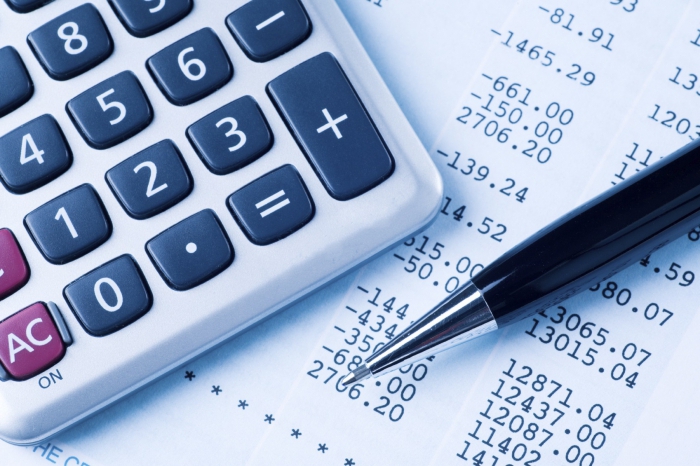In accordance with the current legislation, the taxpayer can completely independently decide what his direct and indirect costs are. And, despite the fact that the list of direct costs, in principle, remained in the current legislation, it is rather optional, and also has ceased to be comprehensive.
How to identify them?
Using the list provided to him as a guide, a person can now independently determine in his accounting policy which particular expenses he has direct, while all the others will already be indirect costs.

As before, direct costs are determined in the cost of unsold goods, services or work performed, while indirect costs are written off to the financial result at the end of the reporting period.
Is there any control?
Despite the peculiarities of the current legislation, it can hardly be said that the taxpayer has complete freedom in deciding what direct and indirect costs are. Any decision of the organization should have a certain logic, economic justification, and should also be clearly dictated by the specifics of the work of a particular company. This position is dictated by the general mood of the requirements of the current tax legislation.

For example, if the taxpayer in his accounting policies decided to register the lease of office space as direct costs, while the costs of the various needs of the main production represent indirect costs, it can hardly be justified somehow from an economic point of view. In this regard, such results can be challenged in the process of the ongoing tax audit.
Accounting
The instruction on the use of the chart of accounts refers to the fact that direct costs include various costs that are directly related to the production of certain products by the company, while indirect costs include the costs of managing and servicing this production. Of course, it can hardly be said that there are also any clear definitions, as a result of which in accounting, just like in tax accounting, the way to evaluate work in progress should be disclosed in the company's accounting policy.

In order to provide a more specific understanding of the algorithm for including various costs in direct and indirect costs, it is best to focus on the concept of conditionally variable, as well as conditionally constant expenses, which is widely used today in the process of economic analysis of a company. This is all the more necessary given that accounting for the fulfillment of the main tasks of the company should be organized in such a way as to ultimately provide the necessary data for analysis, evaluation, and also management of the company by its leader.
Economic analysis
In economic analysis, direct and indirect costs are variable and fixed costs.
Variables include various costs, which vary in accordance with current output. Thus, for example, it is not possible to produce additional goods unless a proportional increase in the cost of material to be used in the production process is introduced. As typical examples of variable costs can be called payments for the use of various means of production, that is, directly the labor of workers, as well as the raw materials used.
At the same time, fixed costs do not change depending on volume of production but, on the contrary, set a certain level of it. If you also give examples, you can distinguish rent for the premises, depreciation of equipment, utility bills and many other expenses.
In real business activity it is practically impossible to single out any net constants or to produce an absolutely clean account of indirect costs. In the vast majority of cases, costs are mixed.
Why are there no such costs?
For example, the salary of an employee who is engaged in the main production is often not piecework but time-based in nature, as a result of which he can produce several products less or more in one working day, which will not affect the total cost of his salary fee.
Exactly the same example may seem and fixed costs. For example, if we consider utility bills with significant fluctuations in the volume of production, there is a real opportunity to save on the cost of water supply, lighting and other needs. A strictly horizontal line of fixed costs is possible only if there is a slight change in production volumes, and some serious growth in any case leads to the need to purchase new equipment, rent additional work areas, and increase the number of administrative staff.
Despite this, in order to ensure the goals of forecasting production needs, as well as the most effective management of the activities of any company, it is necessary to correctly represent the general structure and type of costs. To do this, guided by the history of several early reporting periods, make a schedule of how the volume of production depends on a specific item of expenditure, and at the same time clear it of other factors. If there is any pronounced proportional dependence, then in this case it will be possible to clearly identify any fixed costs or to determine the indirect costs of income tax.
Industry Specifics
Carrying out the above analysis for various companies will ultimately produce completely different results, as a result of which the unification of indirect and direct costs proposed by the current legislation is absolutely unacceptable from the point of view of the analysis of economic activity.
But at the same time, in the context of industries, you can determine some patterns. For each particular area of activity, specialized methodological recommendations have been in force for a long time regarding the accounting of production costs, as well as determining the cost of production, and these recommendations have been developed by various line ministries.
Thus, we can note several of the most typical industries:
- production - on the example of various industrial enterprises;
- performance of work - on the example of a particular construction company;
- trade - for all trading organizations, the procedure for determining costs is subject to a specific article of the Tax Code;
- the provision of services - for this area, the current legislation establishes the right in any reporting period to include the full amount of direct costs in the section for reducing production and sale income without distribution to the remains of unfinished production.
Industry
In this case, indirect production costs include the costs associated with the manufacture of certain products, which can directly and directly be included in their cost:
- various materials and raw materials;
- all kinds of semi-finished products and purchased products;
- energy and fuel that are required to meet technological needs;
- basic and additional wages of workers in the workplace;
- all insurance contributions indicating the amount of wages.
Thus, determine the indirect costs of the cost of a particular product. The main provisions in this case are aimed at ensuring the highest possible analyticity and reliability of the information obtained as a result of accounting. In accordance with these provisions, it is recommended that the maximum possible part of the costs be included in the cost of each individual unit of production as direct costs.
Building
The specifics of accounting in the construction industry includes a much larger number of subcontracting operations compared to production. Unlike most large plants, which in the majority of cases form a relatively closed production cycle, there is a need for specific technical skills in construction, as well as the availability of appropriate permits. In this way, indirect costs (expenses) are formed here a little differently.
In order to conduct competent design of an object, specialized design institutes should be involved, while geodesy specialists are hired to study the terrain, subcontractors who have specialized equipment for earthworks and specialists who have the appropriate permission for electrification also specialized knowledge in this field. This list is actually much larger, but in this case only the main ones are identified.
The function of the general contractor in this case is the most competent involvement of various specialized subcontractors, as well as the most precise control over their work. In a situation where previously various subcontracting works, which included accounting for indirect costs, were charged to the final financial result, construction companies would have suffered various unreasonable losses.
The tax authority in its responses recommended, when writing off such expenses, to be guided by the provisions of the current legislation, considering the principle of equal recognition of expenses and income, and subsequently observe this for those contracts that provide for the receipt of income for more than one reporting period. Thus, it was necessary to “hang up” various expenses in those situations when the articles of the current legislation did not provide for such cases of work in progress, but the tax authorities did not consider how to “hang up” the costs in these cases. Thus, the principles of a certain article of the Tax Code could not be implemented due to the provisions of other articles.
For this reason, modern experts highly recommend that modern construction companies do not include contract work in indirect costs. The company's profit should already be considered from a different point of view of taxation.
Electricity and steam are included in indirect costs
Certain types of raw materials are difficult to distribute between the main and auxiliary types of production. It is for this reason that modern companies in their accounting policies consolidate the provision that the accountant replenishes with certain types of raw materials every month through 1C indirect costs.
This approach is far from the most optimal from the point of view of the tax authorities. Applying regulatory documents regarding cost accounting, as well as calculating the cost of various products, they distribute indirect costs and direct costs, after which they add the income tax of a particular company.
Exact example
During the audit, tax officers drew up a detailed act stating that the company overstated the indirect costs of the cost of steam, fuel gas, electricity and, consequently, underestimated the income tax base.
The company in this case won the dispute, despite the fact that the above types of raw materials are directly involved in production, and also form the cost of production.
What determines the selected category of expenses
What expenses are attributed to indirect or direct, the company determines separately for each individual production cycle. If various production resources in accordance with the technological regulations were not included in the production cycle, that is, they do not represent its integral part, then in this case we can take into account their costs as indirect costs.
An example is the case of a company engaged in the production of cardboard and paper, which deducted the costs of packaging finished products as indirect costs. The inspectors from the IFTS did not adopt such methods of allocating indirect costs, as a result of which it was decided to accrue an additional income tax. However, the company defended its interests up to the Supreme Arbitration Court, as a result of which it was still able to win the case for the reason that the product packaging does not constitute a separate production cycle.
The manufacturing process of cardboard or paper is completely completed at the moment when the finished paper sheet, wound in rolls, gets out of the machine, while the products in the warehouses of the company are taken into account in tons, as well as net weight, that is, without regard to the packaging used. It is for this reason that the court concluded that packaging does not constitute a separate part of the finished product, which is inseparable from the goods invested in it, but serves only as a protection against various damages that may occur during transportation.
It is often impossible to attribute direct costs to one or another production process, because the company does not have the necessary accounting. In this case, the company fully independently develops the procedure for determining the price of finished products in the warehouse, observing the relevant conditions. In particular, it is worth noting that the formation of the full production cost of goods is carried out already at the time of completion of the production cycle, that is, on the date when the last production operation is carried out.



